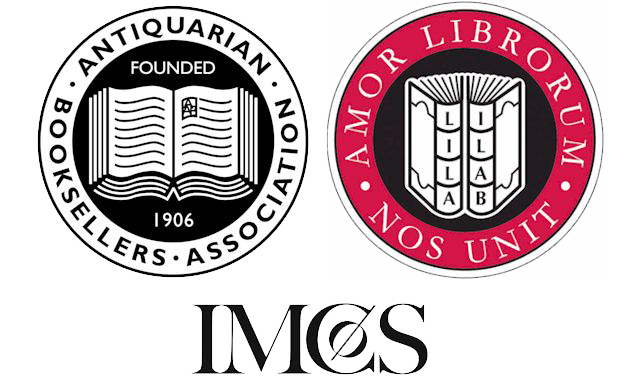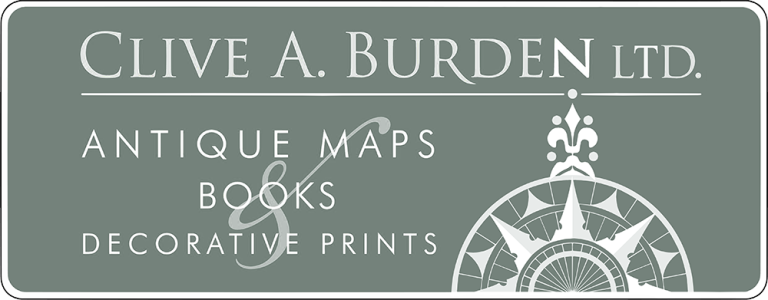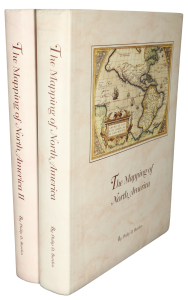Rare Maps and Prints
- World & Celestial
- North America
- West Indies, South & Central America
- British Isles
- British Isles
- English counties
- Large-scale
- Bedfordshire
- Berkshire
- Buckinghamshire
- Cambridgeshire
- Cheshire
- Cornwall
- Cumberland
- Derbyshire
- Devon
- Dorset
- Durham
- Essex
- Gloucestershire
- Hampshire
- Herefordshire
- Hertfordshire
- Huntingdonshire
- Islands
- Kent
- Lancashire
- Leicestershire
- Lincolnshire
- Middlesex
- Norfolk
- Northamptonshire
- Northumberland
- Nottinghamshire
- Oxfordshire
- Rutland
- Shropshire
- Somerset
- Staffordshire
- Suffolk
- Surrey
- Sussex
- Warwickshire
- Westmoreland
- Wiltshire
- Worcestershire
- Yorkshire
- Wales
- Scotland
- Ireland
- Western Europe
- Eastern Europe
- Middle East
- Africa
- Asia
- Australasia & Pacific
- Decorative Prints
- Title Pages
Mr. Philip D. Burden
P.O. Box 863,
Chalfont St. Giles, Bucks HP6 9HD,
UNITED KINGDOM
Tel: +44 (0) 1494 76 33 13
Email: enquiries@caburden.com
THE BLENHEIM PALACE COPY. FIRST EDITION EARLY ISSUE of the FIRST ENGLISH COUNTY ATLAS. With provenance of the EARL’S OF SUNDERLAND and DUKE’S OF MARLBOROUGH. One of the earliest national surveys of any kind and the first uniformly conceived cartographic survey of England and Wales. It was begun in about 1574 and completed by 1579: ‘in the long list of British atlases the first name is also the greatest, the name of Christopher Saxton’ (Chubb). Saxton (c.1542–c.1610) was born in the West Riding of Yorkshire. While the details of his early life are sketchy, it is known that he attended Cambridge University, and in 1570 he was apprenticed as a map maker to John Rudd, vicar of Dewsbury. Saxton began work on his county maps in about 1574. In 1577 he received letters patent from Elizabeth I protecting his maps against plagiarism for the next ten years. As well as the Queen’s protection, Saxton also enjoyed the patronage of Thomas Seckford, Master of the Queen’s Requests, whose mottoes are found on the maps. The maps were available singly or, after the last one was complete in 1578, bound up as here. Accordingly, the maps and other leaves are found in various states, depending on when they were printed. They are after Saxton and engraved by Remigius Hogenberg, Lenaert Terwoot, Cornelis de Hooghe, Augustine Ryther, Francis Scatter and Nicholas Reynolds. The atlas was priced at £5 in 1585. A very high price when Abraham Ortelius’ atlas was available for 10s.
In this example the inserted Index leaf (by Quaritch) is state D (with a four-line heading and three columns), there are eighty-three coats of arms and one blank. All the earlier states are very rare. As in most others seen at recent auction, twelve maps bear Seckford’s pre-1576 motto (Pestis patriae pigricies), and twenty-three his later motto (Industria naturam ornat). All but two are in their final published state. Those of Norfolk and Northamptonshire are in their second of three states which according to Evans & Lawrence (pp. 28-29) pre-dates 1583. It is however the first few leaves which indicate this examples early issue. The general map of ‘Anglia’ is here present in the much rarer FIRST STATE lacking the latitudinal markers. Of the 47 examples cited by Evans and Lawrence (Appendix 10) only 15 bore the first state of the ‘Anglia’. Interestingly the same survey recorded 8 early examples lacking the title and various preliminary leaves and 16 the Coats of Arms. Evans and Lawrence conclude that early examples do not include these preliminary plates (pp. 20 & 25). The paper bears the normal bunch-of-grapes watermark which traditionally indicates an earlier issue.
The date of 1589, ten years later than previously thought, is now being debated as the date of first publication. Its distribution in the early days appears to have been limited and possibly controlled by the State according to research by Peter Barber of the British Library. Few examples survive with contents dating prior to the issue of the Coats of Arms and one can see how detailed knowledge of the country could provide sensitive material to its neighbours, most particularly at the time to Spain. By 1589 the threat from Spain had been diminished by the defeat of the Armada the previous year. This is also interestingly after Saxton’s 10 year privilege expired in 1587. It is believed that this final period of publication was at the hand of Augustine Ryther who was originally the engraver of five of the plates.
Provenance: (1) Thomas Jenkins Stewart who bought the atlas in 1699 for £l.llsh.6d. (his inscription on the back of the first map).
(2) Charles Spencer, 3rd Earl of Sunderland (1674-1722)
Robert Spencer, 4th Earl of Sunderland ((1701-29)
Charles Spencer, 5th Earl of Sunderland, became the 3rd Duke of Marlborough from his aunt in 1733 (1706-58).
George Spencer, 4th Duke of Marlborough (1739-1817)
George Spencer-Churchill, 5th Duke of Marlborough (1766-1840)
George Spencer-Churchill, 6th Duke of Marlborough (1793-1857)
John Spencer-Churchill, 7th Duke of Marlborough (1822-83)
(3) Sold by the Duke of Marlborough at Puttick and Simpson, March 1883.
(4) Bought by Quaritch at the sale for £19.5sh.0d., who inserted the list of maps from another copy and had the binding repaired. Inside the back cover is his invoice for £25 to:
(5) Mrs. Maria Somes (nee Saxton, 1816-1911), acquired March 29th 1888
Wherabouts unknown until sold by D. McGibney Esq. through:
Sotheby’s, New Bond Street, London 3 May 1971 lot 15 sold to Baynton-Williams for £2,600
Sold 19 October 1971 for £3,850 to a private English collection
The third Earl of Sunderland “was a man of learning and taste, vying with his arch-rival Oxford for the mantle of the greatest book collector and connoisseur in Britain of his time” (ODNB). “The Sunderland library, the sale of which was commenced by Messrs. Puttick and Simpson in December 1881, was formed by Charles, third Earl of Sunderland, who died on 19th April 1722, and was transferred from the Earl’s house in Piccadilly in 1733, when Charles, fifth Earl of Sunderland, became Duke of Marlborough … On 1st of December a large company was gathered in the famous auction-room in Leicester Square, to watch the progress of what promised to be one of the most remarkable sales of modern times” (Wheatley). There were five sales in all, this Saxton selling in the final and final part in March 1883 over 11 days. After the sale Bernard Quaritch made a speech stating that “this was the most wonderful library that had been sold by auction in the present century” (Wheatley).
The final Duke of Marlborough who sold the library was the paternal grandfather of Sir Winston Churchill. “The 1st Duke as a soldier was not a rich man, and what fortune he possessed was mostly used for finishing the palace. In comparison with other British ducal families the Marlborough’s were not very wealthy. Yet they existed quite comfortably until the time of the 5th Duke of Marlborough (1766–1840), a spendthrift who considerably depleted the family’s remaining fortune. He was eventually forced to sell other family estates, but Blenheim was safe from him as it was entailed … On his death in 1840, he left the estate and family with financial problems. By the 1870s the Marlborough’s were in severe financial trouble, and in 1875 the 7th Duke sold the Marriage of Cupid and Psyche, together with the famed Marlborough gems, at auction for £10,000. However this was not enough to save the family. In 1880 the 7th Duke was forced to petition Parliament to break the protective entail on the Palace and its contents. This was achieved under the Blenheim Settled Estates Act of 1880, and the door was now open for wholesale dispersal of Blenheim and its contents. The first victim was the great Sunderland Library” (Wikipedia).
Barber ‘Mapmaking in England, ca. 1470-1650’ in The History of Cartography volume 3 part 2 pp. 1623-31; Chubb 1; Evans & Lawrence pp. 9–43; Harley The Map Collector no. 8 pp. 2-11; Hind vol. 1 p. 73, (plts. 38-9 illustrate the two states of the title page portrait); Hodson Herts 1.1; Lawrence ‘Christopher Saxton’ in ‘The Map Collector’ 27 pp. 16-18; Oxford Dictionary of National Biography online; Schilder Monumenta Cartographica Neerlandica, vol. 8. pp. 109-13 figs. 8.5, 8.8-8.10; Shirley ‘Atlases in the British Library’, T.Sax 1b-e; Skelton 1; Shirley ‘Netherlanders in Elizabethan England’, in ‘Mappae Antiquae Liber Amicorum Gunter Schilder’ pp.187-202; Tyacke & Huddy ‘Christopher Saxton and Tudor map-making’; Wheatley, Henry (2013) ‘Prices of Books’, pp. 166-8.
In this example the inserted Index leaf (by Quaritch) is state D (with a four-line heading and three columns), there are eighty-three coats of arms and one blank. All the earlier states are very rare. As in most others seen at recent auction, twelve maps bear Seckford’s pre-1576 motto (Pestis patriae pigricies), and twenty-three his later motto (Industria naturam ornat). All but two are in their final published state. Those of Norfolk and Northamptonshire are in their second of three states which according to Evans & Lawrence (pp. 28-29) pre-dates 1583. It is however the first few leaves which indicate this examples early issue. The general map of ‘Anglia’ is here present in the much rarer FIRST STATE lacking the latitudinal markers. Of the 47 examples cited by Evans and Lawrence (Appendix 10) only 15 bore the first state of the ‘Anglia’. Interestingly the same survey recorded 8 early examples lacking the title and various preliminary leaves and 16 the Coats of Arms. Evans and Lawrence conclude that early examples do not include these preliminary plates (pp. 20 & 25). The paper bears the normal bunch-of-grapes watermark which traditionally indicates an earlier issue.
The date of 1589, ten years later than previously thought, is now being debated as the date of first publication. Its distribution in the early days appears to have been limited and possibly controlled by the State according to research by Peter Barber of the British Library. Few examples survive with contents dating prior to the issue of the Coats of Arms and one can see how detailed knowledge of the country could provide sensitive material to its neighbours, most particularly at the time to Spain. By 1589 the threat from Spain had been diminished by the defeat of the Armada the previous year. This is also interestingly after Saxton’s 10 year privilege expired in 1587. It is believed that this final period of publication was at the hand of Augustine Ryther who was originally the engraver of five of the plates.
Provenance: (1) Thomas Jenkins Stewart who bought the atlas in 1699 for £l.llsh.6d. (his inscription on the back of the first map).
(2) Charles Spencer, 3rd Earl of Sunderland (1674-1722)
Robert Spencer, 4th Earl of Sunderland ((1701-29)
Charles Spencer, 5th Earl of Sunderland, became the 3rd Duke of Marlborough from his aunt in 1733 (1706-58).
George Spencer, 4th Duke of Marlborough (1739-1817)
George Spencer-Churchill, 5th Duke of Marlborough (1766-1840)
George Spencer-Churchill, 6th Duke of Marlborough (1793-1857)
John Spencer-Churchill, 7th Duke of Marlborough (1822-83)
(3) Sold by the Duke of Marlborough at Puttick and Simpson, March 1883.
(4) Bought by Quaritch at the sale for £19.5sh.0d., who inserted the list of maps from another copy and had the binding repaired. Inside the back cover is his invoice for £25 to:
(5) Mrs. Maria Somes (nee Saxton, 1816-1911), acquired March 29th 1888
Wherabouts unknown until sold by D. McGibney Esq. through:
Sotheby’s, New Bond Street, London 3 May 1971 lot 15 sold to Baynton-Williams for £2,600
Sold 19 October 1971 for £3,850 to a private English collection
The third Earl of Sunderland “was a man of learning and taste, vying with his arch-rival Oxford for the mantle of the greatest book collector and connoisseur in Britain of his time” (ODNB). “The Sunderland library, the sale of which was commenced by Messrs. Puttick and Simpson in December 1881, was formed by Charles, third Earl of Sunderland, who died on 19th April 1722, and was transferred from the Earl’s house in Piccadilly in 1733, when Charles, fifth Earl of Sunderland, became Duke of Marlborough … On 1st of December a large company was gathered in the famous auction-room in Leicester Square, to watch the progress of what promised to be one of the most remarkable sales of modern times” (Wheatley). There were five sales in all, this Saxton selling in the final and final part in March 1883 over 11 days. After the sale Bernard Quaritch made a speech stating that “this was the most wonderful library that had been sold by auction in the present century” (Wheatley).
The final Duke of Marlborough who sold the library was the paternal grandfather of Sir Winston Churchill. “The 1st Duke as a soldier was not a rich man, and what fortune he possessed was mostly used for finishing the palace. In comparison with other British ducal families the Marlborough’s were not very wealthy. Yet they existed quite comfortably until the time of the 5th Duke of Marlborough (1766–1840), a spendthrift who considerably depleted the family’s remaining fortune. He was eventually forced to sell other family estates, but Blenheim was safe from him as it was entailed … On his death in 1840, he left the estate and family with financial problems. By the 1870s the Marlborough’s were in severe financial trouble, and in 1875 the 7th Duke sold the Marriage of Cupid and Psyche, together with the famed Marlborough gems, at auction for £10,000. However this was not enough to save the family. In 1880 the 7th Duke was forced to petition Parliament to break the protective entail on the Palace and its contents. This was achieved under the Blenheim Settled Estates Act of 1880, and the door was now open for wholesale dispersal of Blenheim and its contents. The first victim was the great Sunderland Library” (Wikipedia).
Barber ‘Mapmaking in England, ca. 1470-1650’ in The History of Cartography volume 3 part 2 pp. 1623-31; Chubb 1; Evans & Lawrence pp. 9–43; Harley The Map Collector no. 8 pp. 2-11; Hind vol. 1 p. 73, (plts. 38-9 illustrate the two states of the title page portrait); Hodson Herts 1.1; Lawrence ‘Christopher Saxton’ in ‘The Map Collector’ 27 pp. 16-18; Oxford Dictionary of National Biography online; Schilder Monumenta Cartographica Neerlandica, vol. 8. pp. 109-13 figs. 8.5, 8.8-8.10; Shirley ‘Atlases in the British Library’, T.Sax 1b-e; Skelton 1; Shirley ‘Netherlanders in Elizabethan England’, in ‘Mappae Antiquae Liber Amicorum Gunter Schilder’ pp.187-202; Tyacke & Huddy ‘Christopher Saxton and Tudor map-making’; Wheatley, Henry (2013) ‘Prices of Books’, pp. 166-8.
SAXTON, Christopher
[An Atlas of England and Wales]
London, 1579
Folio (430 x 295 mm.), full contemporary English calf laid down on nineteenth century boards, with original ornate central and corner gilt decorated panels, spine with raised bands, gilt ruled compartments with central gilt tooling. With letterpress index laid down (Skelton setting D), with 35 double-page (Yorkshire folding) copper plate engraved maps, ALL WASH COLOURED IN A CONTEMPORARY HAND, mounted on stubs, engraved frontispiece and coats of arms supplied in facsimile (not called for), 6 maps with one or more margins trimmed within platemark to edge of rule border, manuscript additions and corrections to Hampshire, Devon, Gloucestershire, Suffolk, Northampton and Northumberland, 2 curiously with folds although matching pagination illustrates they are from this example, otherwise in good condition.
Stock number: 8808
SOLD








